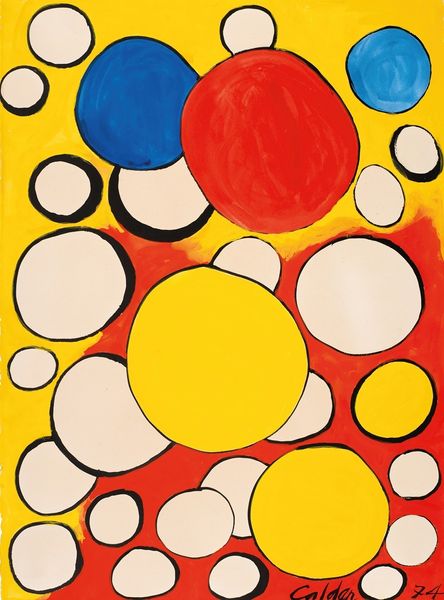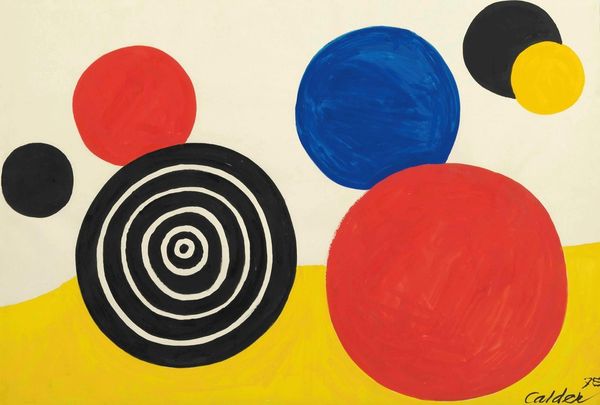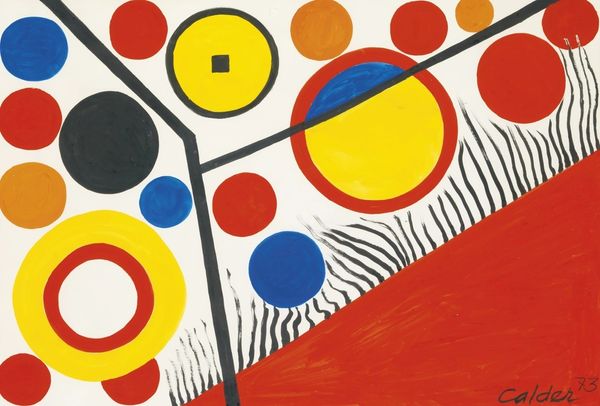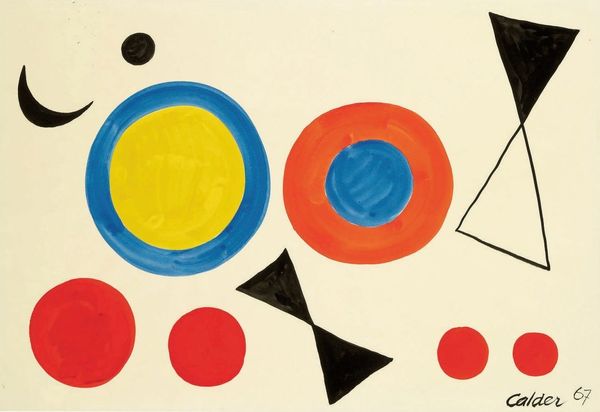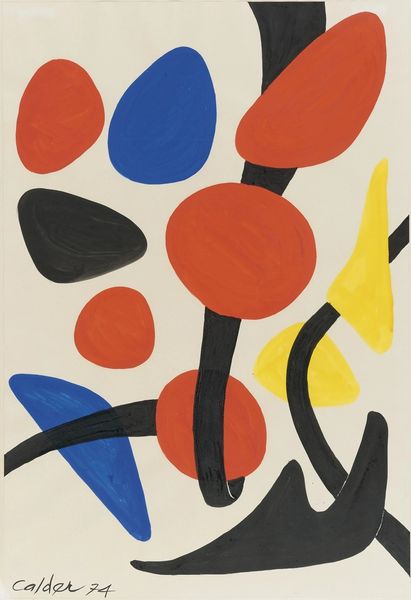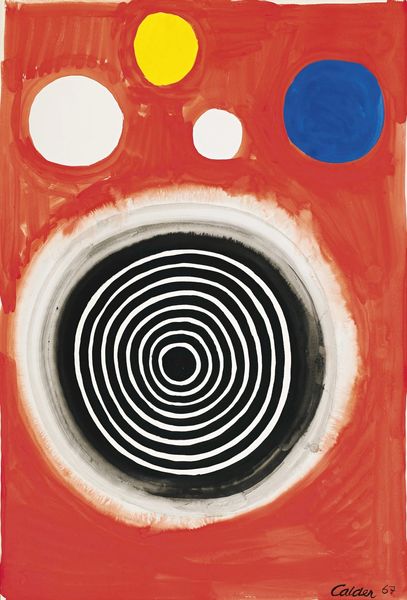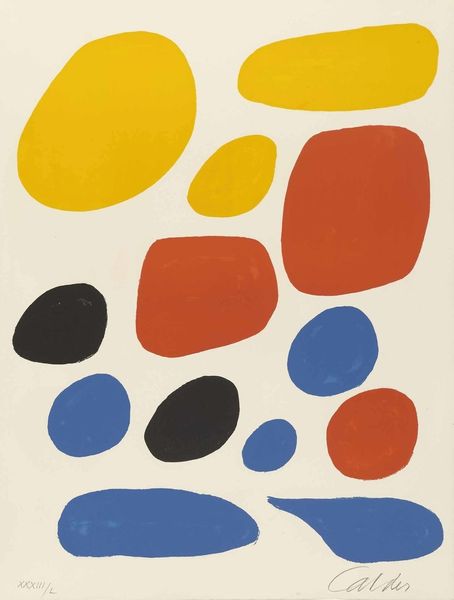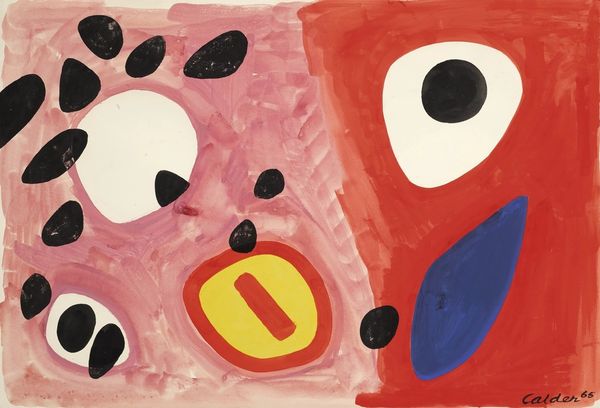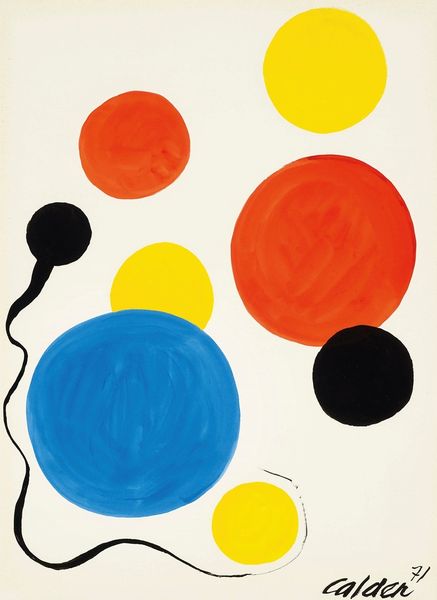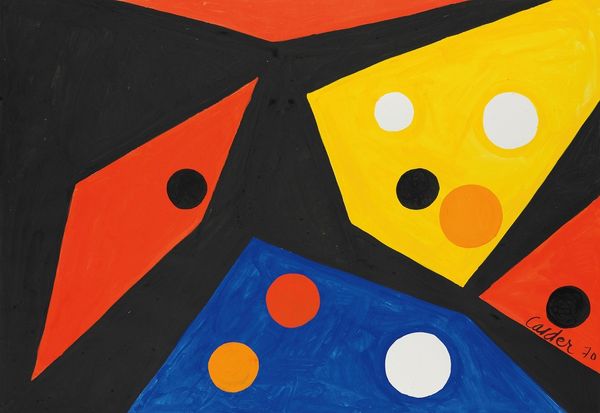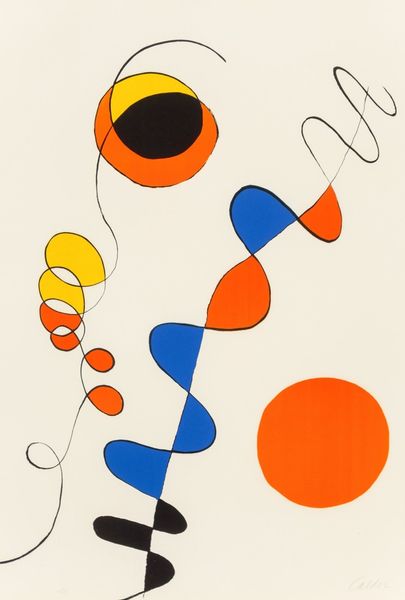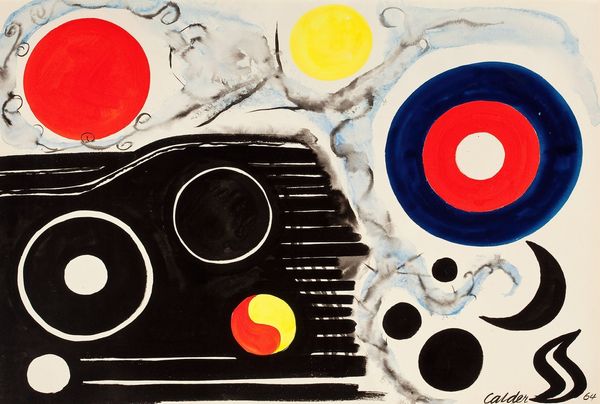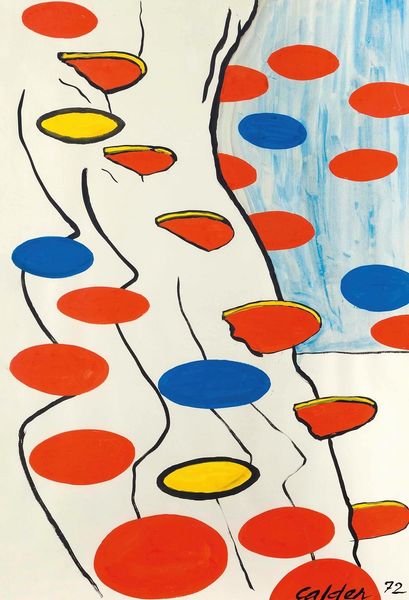
Copyright: Modern Artists: Artvee
Curator: So, we’re looking at "Two Red Boomerangs" by Alexander Calder, completed in 1973. He uses acrylic paint on, it seems, paper, leaning into the pop art movement he flirted with. Editor: The shapes feel immediate and cheerful. It’s like a primary-color playground – circles and organic forms dance on the page. The flatness also accentuates the materiality of the paint itself. Curator: I find Calder’s move towards painting fascinating within his broader career. We know him primarily for sculpture and mobiles, but these paintings became very popular; I see a connection here to his earlier work for theatrical sets and backdrops – a flattening of perspective to prioritize pure shape and colour. This painting has a decidedly playful attitude that's reflective of art produced during the time. Editor: Absolutely. The way those red boomerang-like shapes curve around the composition—there’s a real sense of imposed gesture there that, to me, acknowledges the active process of production. You know, the direct relationship of artist and pigment, which echoes a more labor-intensive method for generating art. But these could just be offcuts! Curator: And what about his use of simple, even rudimentary forms? Circles and curves that bypass any attempt at realism? One might be critical and say it’s too rudimentary, but look at the number of exhibitions that presented pieces like this over the course of the early seventies. These were being promoted and widely celebrated in museum settings and by serious critics and writers, in America and in Europe. Editor: Fair point. The very act of using industrial acrylic paints democratizes the work, connecting fine art practices with everyday materials more broadly available for a culture that had become defined by its manufacturing prowess and commodity output. The "high" meeting "low" right on the picture plane. Curator: It makes you think about the role of institutions in defining what becomes "art" and how markets further determine its value and appeal, even today. Editor: For sure. It brings up this essential dialogue: material becomes a record, a social testament. A dialogue not only on visual delight, but where objects come from and to whom they are beholden. Curator: And that really changes how we look at a work like "Two Red Boomerangs" here. Editor: Right! These playful materials speak of serious conditions, just underneath the sunny aesthetic.
Comments
No comments
Be the first to comment and join the conversation on the ultimate creative platform.
